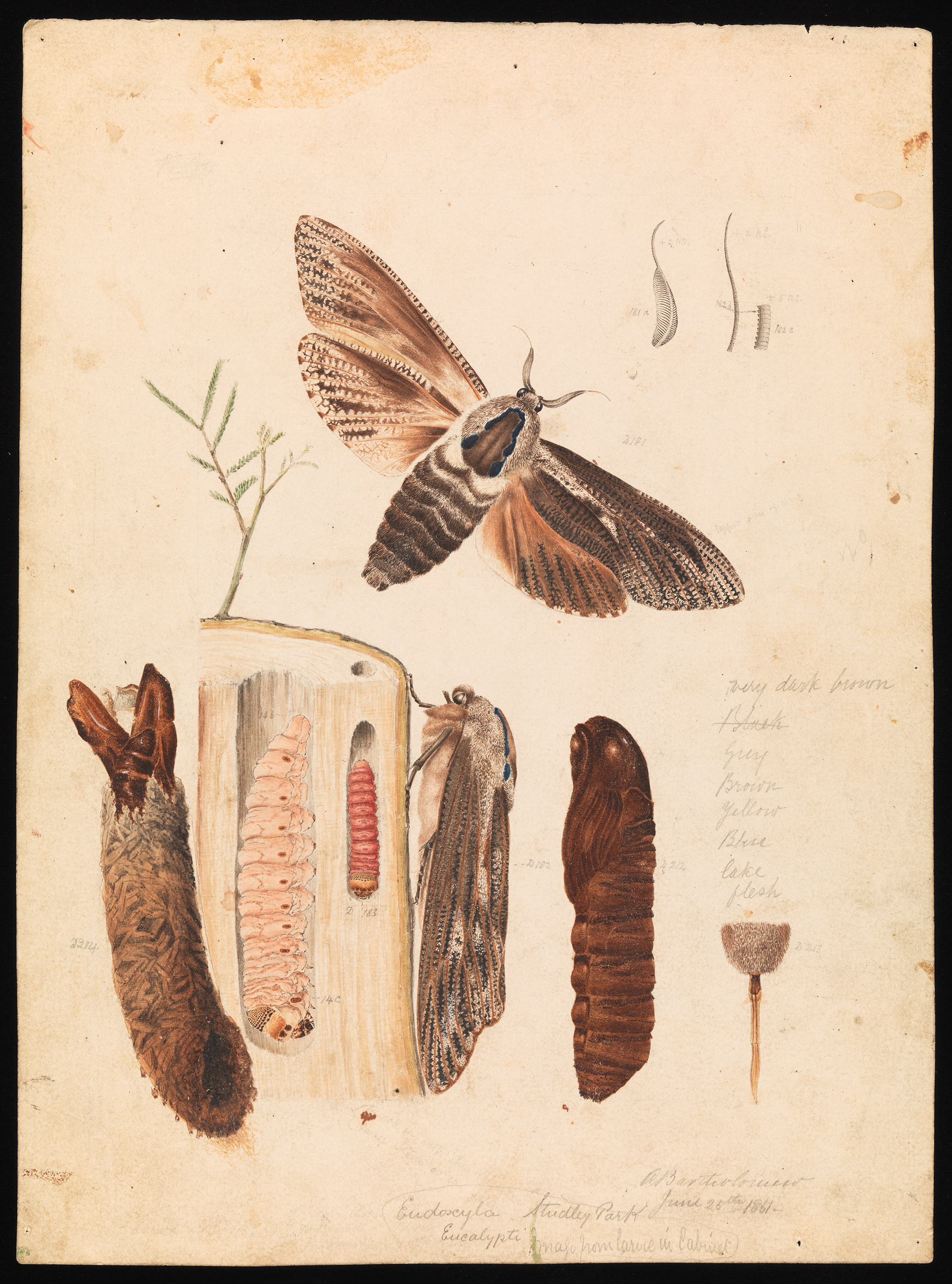Wattle Goat Moth, Xyleutes eucalypti
Plate 30. Large Wattle Goat-Moth, Zeuzera eucalypti (now known as Wattle Goat Moth, Xyleutes eucalypti found in all parts of the colony)
The moths of the family Hepialidæ are popularly known as "Swifts" or "Swift-moths," from the great quickness of their direct flight in the dusky twilight. The group is divided into three sections, typified by, lst, the Hepialus the true Swifts or Chost-moths; 2nd, by Cossus, or the Goat-moths; and 3rd, by Zeuzera, or the Wood-leopard-moths, as they are popularly called, respectively.
The larvæ of all are thick fleshy naked grubs, with a few hairs. Those of the first group inhabiting subterranean burrows and feeding on the roots of grasses; those of other two feeding on the interior of the wood of timber trees, to which they prove very destructive from boring great vertical canals, so weakening the tree that it either dies or is blown over.
In most forest-bearing countries the natural enemy of these larvae and protector of the trees from their destructive action is the group of Birds of the family Picidæ or Woodpeckers, who by instinct know where the larvae are, and by powerful strokes of their suitable bills cut down quickly on the larvæ through the sound wood, and transfixing the grub with their long worm-like barbed tongue, draw it out, and devour it. In Australia alone the Woodpeckers have not been provided; and the consequence is that every tree cut up for firewood is seen to be traversed with large cylindrical canals made by these or allied larvæ, which are the greatest destroyers of our forests- so abounding in the wood of almost every forest tree that, in a storm, it is dangerous to go near a large tree, as one apparently sound will snap across unexpectedly with a moderate wind from the number of those larvæ tracks.
The classical reader will remember the praises lavished by the Roman epicures of old on the Cossus as a delicacy for the table; being a thick, pink, fleshy caterpillar, as long as a man's finger, extracted from the wood of the Willow trees, and produced by a Goat-moth belonging to this family; it is curious to find that the very similar larvæ of the present insect, abounding in the Wattle trees, or Acaciæ, of Australia, are highly prized for food by the natives. When properly cooked I am told by all bushmen that they are delicious, but circumstances over which I have no control have prevented me from trying them, to test the fact myself.
Considering the great importance attached lately by the Government to the preservation and cultivation of the Wattle or Acacia trees, and the great and increasing annual money value of the bark, it is important for bark-strippers and the persons employed by the Government to foster the growth of the Wattles to know the appearance of the insect represented on our plate, as the greatest destroyer of these trees, so that attention may be given to killing the perfect moth; the large abdomen of the female of which is distended with millions of eggs, each of which will produce a voracious grub as thick as the thumb and five or six inches long, eating the timber for years.
